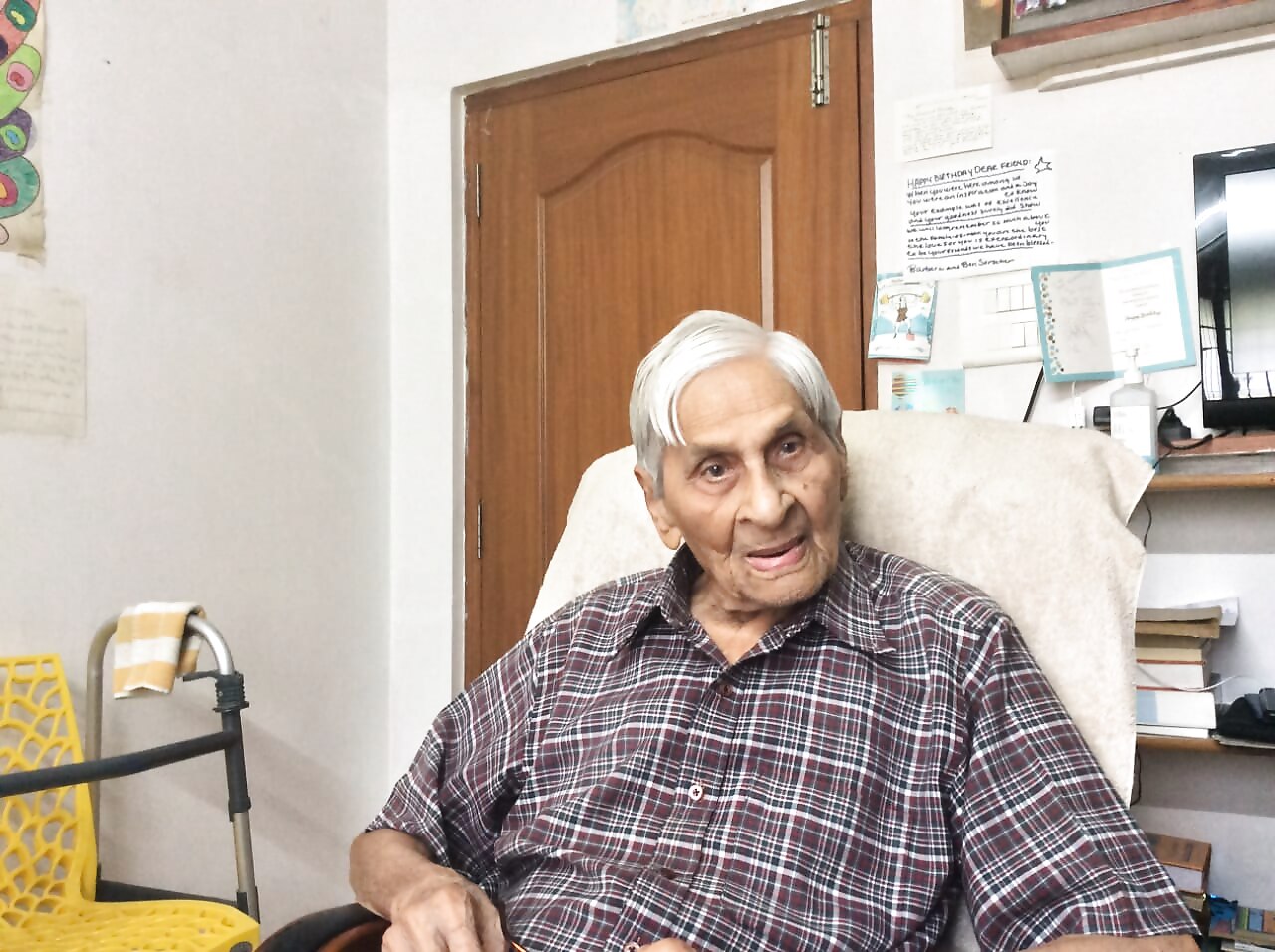
views
Nagpur: The youngest of the ‘Euler’s Spoilers’ is no more. He was 103. Indian mathematical genius, Sharadchandra Shankar Shrikhande, who along with his mentor late RC Bose and their colleague late ET Parker disproved way back in 1959 an 18th century mathematical conjecture, passed away at Vijaywada on April 21, bringing curtains to a glorious chapter from the world of statistics and mathematics.
He is survived by his three children, grand and great grandchildren, a community of his students, and a body of phenomenal work that would continue to illuminate many a pathway.
For the tribe of mathematicians, the tall and deeply thoughtful Shrikhande was a doyen, who spent a century dedicated to the cause of his discipline – in path-breaking research and teaching – and whose contributions to the field of combinatorics and statistical design theory are unparalleled.

The humble man shot into fame six decades ago along with Bose and Parker at the University of North Carolina (UNC) when they disproved the 18th century Swiss mathematician Leonard Euler’s conjecture, showing orthogonal Latin squares corresponding to “oddly even numbers” (except 6) — numbers such as 10, 14… that, like 6, left a remainder of two when divided by four — did exist.
For that, the trio came to be known as ‘Euler’s Spoilers’.
It took 177 years for the conjecture to be falsified, a development that found its way on the front page of the New York Times on Sunday, April 26, 1959, exactly 61 years ago.
Legend is that the Czar of Russian asked Leonard Euler, a Swiss mathematician, this question: Six different regiments have six officers, each one holding a different rank. Can these 36 officers be arranged in a square formation on the parade ground so that each row and column contains one officer of each rank and one from each regiment?
The mathematical inquiry was, whether the orthogonal Latin squares of the order 6 existed. For years, the prodigious mathematician pondered over the puzzle and said “no”.
A Latin square is a Sudoku-like rectangle with equal number of rows and columns with symbols or numbers occurring only once in each row and column. It had been around for ages. For instance, Choi Seok-Jeong (1646-1715), a Korean mathematician, used orthogonal Latin squares of order 9 to construct magic squares – where the entries in rows and columns add up to the same number.
When superimposed on one another, the Mutually Orthogonal Latin Squares or MOLS give rise to a grid of order-pairs in which every order-pair appears exactly once in the whole grid.
Then, just before his death, Euler conjectured in 1782 that in fact no orthogonal Latin squares existed for ‘oddly even numbers’. In 1901, a French mathematician named Gaston Tarry proved that this (n = 6) was indeed impossible by checking all possible cases. But Euler’s conjecture that orthogonality was impossible for all oddly even numbers remained unresolved. Until 1959, when the trio suddenly solved this problem that had baffled the mathematicians for almost two centuries.
What began with Parker’s study on the construction of some sets of MOLS, was expanded by Bose and Shrikhande in their paper titled ‘Falsity of Euler’s Conjecture about the non-existence of two MOLS of the order 4t+2, and thereafter began a “feverish correspondence” between the three.
Their collaboration culminated in a paper that proved that orthogonal Latin squares of all orders other than 6 and 2 did exist. Bose, Shrikhande and Parker had bridged geometry, combinatorics and statistics, to disprove the 178-year-old conjecture from what began as an exploration into building of MOLS and balanced incomplete statistical block designs for practical agriculture experimentation.
Today, Latin squares and balanced incomplete block designs have wide ranging applications – from clinical trials of medicines to complex communication systems.
The techniques the Euler’s Spoilers developed and subsequent works of Shrikhande have become an important part in the study of statistical design theory and combinatorics – a field of math that looks to combine different things and explores whether certain combinations are possible at all, and if so, what combinations are the most appropriate given certain constraints.
The trio’s result proving Euler wrong was announced at the 557th annual meeting of the prestigious American Mathematical Society in New York in April 1959.
On April 26, the NYT featured the trio’s work and noted that they were fondly known among their colleagues as ‘Euler’s Spoilers’.
In his biography much later, Shrikhande shared that the man at the reception of the hotel where he stayed then curiously showed him the newspaper and asked if he was the man on the front page, to which Shrikhande had smiled and said, “yes”. The man replied: “You must have done something big; NYT’s front page can't be bought for even millions of dollars.”
Shrikhande and Bose were, at the time, at the University of North Carolina, Chapel Hill in the Department of Mathematical Statistics, which had been founded in 1946 by the statistician Harold Hotelling (1895–1973). Bose had been a faculty there since 1949, and Shrikhande, who had joined for a PhD in 1947, was Bose’s first PhD student – his journey until that point had been arduous. He came from very humble financial background.
Born in Sagar, in the then Central Provinces and Berar (now Madhya Pradesh) in 1917, Shrikhande did his BSc (Honours) from Nagpur's Government Science College (now Institute of Science) and later went to the Indian Statistical Institute at Kolkata, then headed by the legendary statistician, PC Mahalanobis, to hone his statistical skills under his mentor R C Bose.
In 1947, he went on a scholarship for further study to the North Carolina University in the US where Bose had joined as a professor in 1949. Shrikhande did his PhD in Discrete Mathematics, also known as Combinatorics, involving the study of Matrices, a subject that was completely new to him. But he finished his study in one year, an indication of his sharp mathematical intellect.
Studying with Bose was a turning point in his life, he would note later.
For, it was Bose who showed that a complete set of mutually orthogonal Latin squares is essentially the same as a finite projective plane; he later introduced Shrikhande to the theory of statistical design of experiments, a field where Latin squares proved to be more than amusement.
In 1978, Shrikhande retired, but continued to teach for some years at Nagpur University.
“He was tall, quiet, and very British-like,” Dr Siddharth Kane, the just retired Vice Chancellor of the Nagpur University, said. Kane did his Masters in Statistics from the post graduate department of the Nagpur University in 1980-82, when Shrikhande taught him. “A brilliant but modest man.”
Kane recollected that before entering his class, Shrikhande would smoke a cigarette, pondering quietly over his topics, and then hold his students in rapt attention through his lectures.
“You would find very few students today to grasp his theorems,” Kane said. “I am very proud that I was his student; he left a deep impression on all his students.”
In an article on the occasion of Shrikhande’s centenary celebrations, Navin Singhi, one of his Ph.D students in 1972–73, remembered his teacher’s simplicity and unassuming style.
“He used empty envelopes left from incoming mails for writing research papers. He almost never used normal paper or notebook to write down,” the article quoted Singhi as saying.
Singhi, who retired in 2014 at the Tata Institute of Fundamental Research, himself collaborated with his mentor in a lot of work in Combinatorics.
Another student observed: “I was never ridiculed even if I made a mathematically wrong statement.”
Shrikhande founded the department of statistics at the Institute of Science at Nagpur in 1955 before taking up the Chapel Hill position in US where 1959 proved to be a turning point. He returned to India in 1960, to join the Benaras Hindu University, which he left in 1963 to found the Department of Mathematics and UGC Centre for Advanced Study in Mathematics at the University of Bombay.
His son, Mohan, a renowned combinatorist himself, retired from the Central Michigan University in 2015. After his wife Shakuntala’s demise in 1988, Shrikhande lived with his children in the US and returned to India in 2009 to spend the rest of his life at an Ashram for the underprivileged girls run by one of his grandchildren. Bose and Parker died in 1987 and 1991, respectively.
Shrikhande published another landmark paper in 1959 on what has come to be known as the Shrikhande graph, which has connections to algebra, group theory and topology.
“His graph is known for the beautiful format it takes,” says Arun Muktibodh, retired Head of the Department of Mathematics at Nagpur's Mohata Science College.
Graphs have applications in various fields like management, electronics and computer science.
“It’s important to preserve his memory and work for generations,” said Muktibodh, who produced a documentary on him two years ago. The film titled ‘Euler’s Spoiler: A Living Legend’ is archived by the film society of the Indian Institute of Science (IISc), Bengaluru. “With some fresh edits it will be on YouTube soon,” he said. “That’s how new generations will know about the man and his work.”




















Comments
0 comment